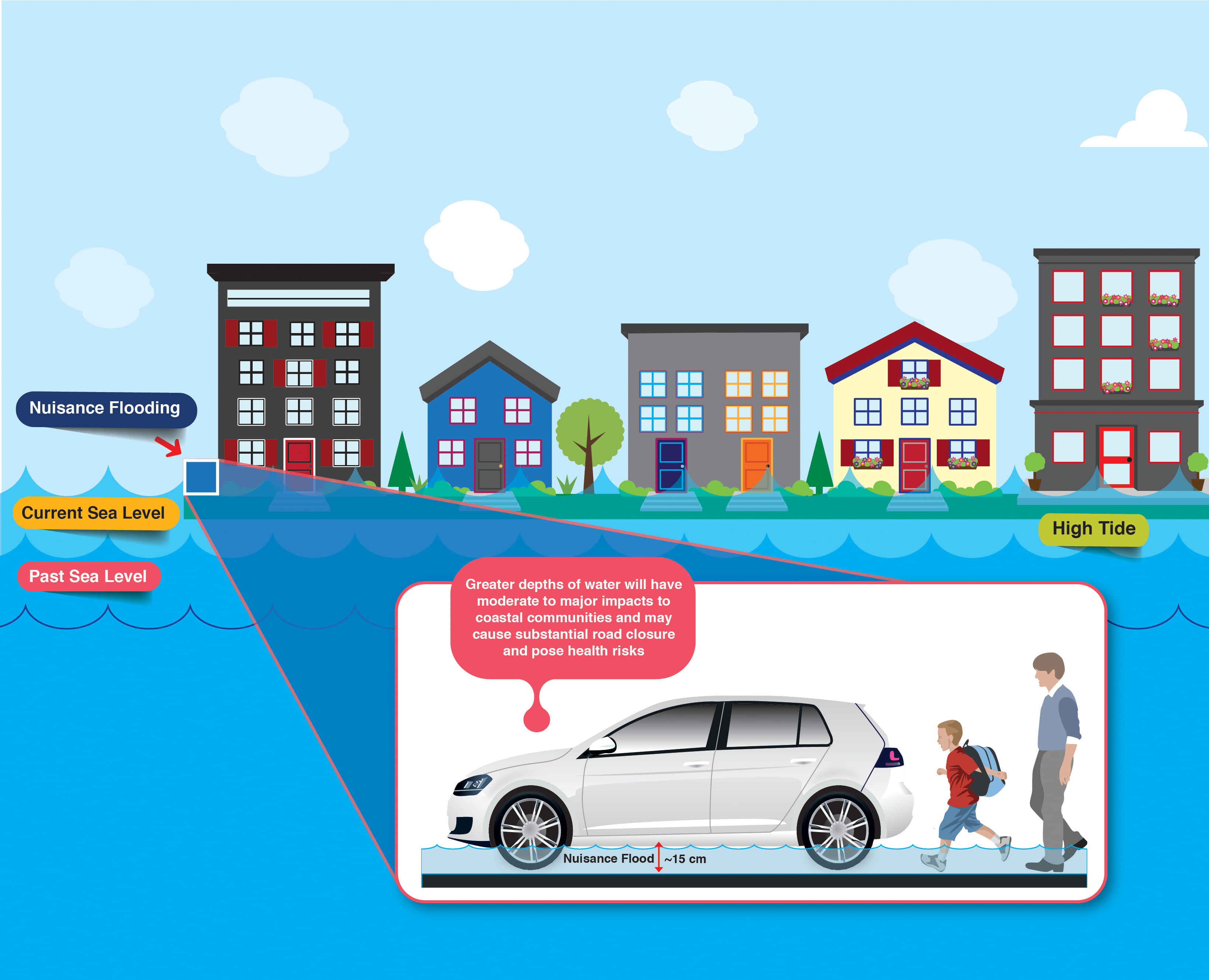Over time, nuisance flooding can cost more than extreme, infrequent events
Long-term impact of climate change on US cities is rising, UCI researchers find

Irvine, Calif., Feb. 21, 2017 – Global climate change is being felt in many coastal communities of the United States, not always in the form of big weather disasters but as a steady drip, drip, drip of nuisance flooding.
According to researchers at the University of California, Irvine, rising sea levels will cause these smaller events to become increasingly frequent in the future, and the cumulative effect will be comparable to extreme events such as Hurricane Katrina or Superstorm Sandy.
“Catastrophic storms get a lot of media attention and are studied, but we wanted to know more about the non-extreme events,” said Amir AghaKouchak, UCI associate professor of civil & environmental engineering and co-author of a new study on cumulative hazards in the American Geophysical Union journal Earth’s Future.
“These diffuse floods happen multiple times a month or year,” he said. “They don’t kill anyone, they don’t damage buildings, but over time they have extremely high-cost outcomes, and it happens without us realizing it.”
In Washington, D.C., for instance, the number of hours of nuisance flooding per year has grown from 19 between 1930 and 1970 to 94 over the last two decades. Projections suggest that there could be as many as 700 hours of nuisance flooding per year by 2050. The capital’s monuments, marinas, parks, public transportation infrastructure, roads and businesses could be affected. The UCI researchers found similar potential impacts in four other American cities: Miami, New York, Seattle and San Francisco.
Climate change is driving the growth of cumulative hazards, they noted. A full moon on a clear night triggering higher tides is now enough to cause flooding, because ocean levels are so high.
“The frequency is increasing because of sea level rise,” AghaKouchak said. “We call it clear-sky flooding. There’s no rain, but if you have a higher-than-usual tide, you get flooding in these coastal areas.”
While not catastrophic at the time, these episodes degrade infrastructure and can damage roads and building foundations. More immediately, nuisance flooding forces municipalities to expend resources to pump water out of streets. Communities suffer school closures, traffic interruptions, and reverberating waves of cost and inconvenience. Degraded sewer infrastructure results in heightened public health risks.
Lead author Hamed Moftakhari, a UCI postdoctoral scholar, said that people in often-hit regions have begun the process of adapting to the problem. “In a recent social science survey, people weren’t really interested in knowing the depth of the water. They just wanted to know how long they would be flooded,” he said. “Their main concern was finding out when they could get back to their schools and businesses.”
But public officials can’t afford to take cumulative hazards in stride, said co-author Richard Matthew, UCI professor of planning, policy & design. Policymakers faced with limited capital funds frequently defer action or make incremental improvements when major investments may be critical to fortify their communities. The team created a cumulative hazards index to pinpoint which locations would experience the greatest long-term risk.
“This index gives officials a tool that could help them decide to move beyond the convenient but potentially very costly strategies of deferral and incrementalism and promote more transformative policies where they make sense,” Matthew said.
Co-author Brett Sanders, UCI professor of civil & environmental engineering, added: “The index is particularly useful for predicting future hot spots for nuisance flooding across the U.S., where adaptation measures are needed the most.”
Funding for the study was provided by the National Science Foundation. Data was provided by the National Oceanic & Atmospheric Administration and Climate Central.
About the University of California, Irvine: Founded in 1965, UCI is the youngest member of the prestigious Association of American Universities. The campus has produced three Nobel laureates and is known for its academic achievement, premier research, innovation and anteater mascot. Led by Chancellor Howard Gillman, UCI has more than 30,000 students and offers 192 degree programs. It’s located in one of the world’s safest and most economically vibrant communities and is Orange County’s second-largest employer, contributing $5 billion annually to the local economy. For more on UCI, visit www.uci.edu.
Media access: Radio programs/stations may, for a fee, use an on-campus ISDN line to interview UCI faculty and experts, subject to availability and university approval. For more UCI news, visit wp.communications.uci.edu. Additional resources for journalists may be found at communications.uci.edu/for-journalists.